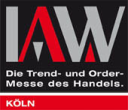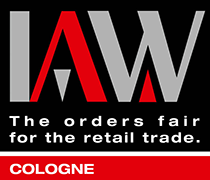Online sales platforms: 5 online marketplaces in comparison
E-commerce is a trend that has become mainstream and is growing year on year. According to the German E-Commerce and Mail Order Association (BEVH), gross e-commerce sales totalled 99.1 billion euros in 2021. Growth in online retail has therefore increased rapidly in the second year of coronavirus. Buyers aged 50 and over were recently responsible for at least half of all online purchases. According to the BEVH, the assumption that younger consumers in particular shop online no longer applies since the start of the global pandemic. Online sales platforms and marketplaces are benefiting the most from this. The Internet’s shopping mall, where all online retailers come together to offer their goods to users within an online presence.
Selling online: Using sales platforms correctly
When choosing an online marketplace, it is important to understand which mechanisms have an influence on the successful use of the respective platform. With most online marketplaces in Germany, you have several options for enhancing your product placement:
Search Engine Optimisation: Online marketplaces are increasingly developing into a gigantic search engine for products. Google introduced shopping functions in order to avoid being lost in the competition from Amazon, Ebay and co. Search engines show users the way to offers and products. It is therefore essential to take search engine optimisation criteria into account when posting articles. The aim of all SEO measures must be to ensure that your products appear in the search results and are visible to the user. Without a potential user seeing the product, it is difficult to buy a product online. The user may otherwise decide in favour of one of your competitors.
Article title: Most customers on online marketplaces come across the products of online retailers via the search function. The title of the product page is therefore the first thing that potential buyers see. It therefore creates the first impression and plays a major role in the purchase decision. So choose a meaningful and appealing headline that takes into account the search intentions of a potential customer.
Product images: When it comes to making a purchase decision, many factors come into play. However, the product photos stand out. If a potential customer has found their way to a product listing on a sales platform, texts and images go hand in hand. Make sure that your product photos make a professional impression. Poor lighting, an untidy background and poor image quality will immediately put many users off and make them doubt the quality of your product. You can find out which aspects you should consider when selecting your product images here!
Product description: Describe your offer as detailed, precise and creative as possible. In the B2C sector in particular, clear facts are not enough to persuade customers to make a purchase decision. Detailed product descriptions must replace the sales pitch so that ambiguities or uncertainties are prevented. This also makes the provider more trustworthy and arouses positive emotions in the customer, while at the same time reducing the number of returns.
Most online sales platforms also allow retailers to present facts about the product on offer in keywords. Every second counts. Any opportunity to simplify the listing and provide essential information more quickly via the sales interface should be utilised. This gives users the chance to quickly recognise whether the goods meet their expectations.
Online sales platforms in comparison
Here you will find a clear and detailed comparison of the best-known online marketplaces and sales platforms in Germany. How many users and traders do the platforms generate, what fees can be charged, what niches or product categories are offered and what special features do the individual sales platforms have.
Online marketplace number 1: Amazon.de
There is probably no way around it: Amazon is by far the world’s leading online sales platform. With a turnover of 11.8 billion US dollars and around 44 million regular customers, including 17 million Prime users, Amazon dominates German online retail. Amazon has over 300 million active customer accounts worldwide. According to the company, more than 237 million different products are offered on its German subsidiary, Amazon.de. According to various sources, only 55,314 online retailers in Germany actively use the platform to sell their products digitally. Amazon was founded in 1994 in Seattle in the US state of Washington and was initially an ‘online bookstore’. The online giant is now at the forefront of the digital industry and has become the world’s leading online retailer.
The selection of products and services on Amazon is extremely wide-ranging. A special feature is the combination of its own product catalogue and the Amazon Marketplace as an open sales platform for retailers.
With 55.2 million euros, Amazon ranks third in the German TV advertising budget among e-commerce business models. As an online marketplace, this makes it incredibly attractive for all its online retailers, who benefit from it directly or indirectly. The main advantage of the platform is the associated traffic. The sheer number of users who regularly use Amazon or even use the platform as a search engine for a wide variety of products seems to be an unbeatable argument in favour of selling on this online sales platform.
Fees: Sellers pay a percentage sales fee of between 7-15% per item sold. Depending on the sales tariff, a sales fee of €0.99 per item or a monthly fee of €39 per month is also payable.
Online platform number 2: ebay.de
Affectionately referred to by many as the flea market among online marketplaces: The online platform eBay was originally launched as an auction house for used items from private individuals to private individuals. With auctions, the online auction house has turned a special form of sales into a digital standard. In the meantime, fixed prices or suggested prices have become standard, so that you as a seller can offer the ‘normal’ online shopping experience.
According to official figures from the operator, 246 million products were traded in Germany alone in 2017. In the same year, a total of 9.56 billion US dollars were traded worldwide. Compared to Amazon, the number of active retailers is almost twice as high. In Germany, around 125,700 online retailers are said to have actively traded via the online marketplace in 2016 and made numerous offers and products available to around 174 million active user accounts worldwide.
eBay is particularly popular with collectors and bargain hunters. Even today, users still sell second-hand items on the platform. Meanwhile, the majority of listings (mostly new items) are posted by commercial retailers or manufacturers. eBay has a very large audience and offers retailers a number of customisation options. Connecting to your own webshop is very easy with systems such as Shopify and makes eBay even more interesting.
Fees: Sellers can expect a percentage sales commission of between 4.5-10.5 % per item sold. In addition, basic fees for active trading on the platform can range from 39.95-4999.95 euros at the peak.
Sales platform number 3: rakuten.de
The number one online marketplace in Japan. Rakuten is becoming increasingly well-known as a shopping platform in Germany and enjoys a growing reach. The Group states that it generated around 7.1 billion US dollars worldwide in 2016 via the respective online marketplaces. In comparison, there were a small number of 7,000 active retailers in Germany up to 2017, which recorded more than 35 million visits in Germany in 2016.
It seems as if the Rakuten sales platform could be Amazon’s little brother. Nevertheless, the platform differs significantly from other online marketplaces in certain criteria. Customers receive a so-called Superpoint for every euro they spend. This corresponds to one cent and can be used for subsequent purchases. Unlike Amazon, Rakuten strengthens the retailer’s positioning. The retailer appears in the search, including their offers. As a seller, you can customise the layout of your sales page. You will also find support in the areas of marketing and positioning. The sales platform also offers interfaces to external software applications.
Fees: The basic fee costs 39 euros per month and the sales fee per item is nine per cent, in addition to the one-off set-up fee of 49 euros. If you would like to offer your buyers Superpoints, you must expect to pay an additional one per cent. If you also use affiliates, Rakuten will receive a further one per cent.
Online marketplace number 4: hood.de
hood.de was launched in 2000 and is very similar to eBay or Amazon, but as a fair alternative. The focus of the sales platform is on the fairest possible cooperation between retailers and buyers. The founder felt that the constant increases in fees charged by the US competition were no longer acceptable and therefore founded his own online marketplace.
Online retailers are offered comprehensive and flexible shop solutions with their own URL and customised design. The platform thus offers both private and commercial interested parties the opportunity to set up a free member account and post items for sale. The sales platform claims to have 12 million active customers a year, making it one of the largest online marketplaces in Germany. The sales volume and purchasing power in Germany are significantly lower than those of its main competitors Amazon and eBay. Nevertheless, an impressive 10 million offers are recorded on the platform every day. In 2018, these listings originated from a total of 10,000 online retailers active in Germany, which generate an annual turnover of around 41 million euros.
There are many types of offers for products, including various auctions. The platform offers many payment methods and works with the provider Klarna for invoice and installment purchases.
Fees: Sellers can expect a percentage-based sales commission of between 3–8% per item sold. Online-Händler pay 21 euros for a so-called Goldshop and 32 euros per month for the premium version Platinum Shop.
Online platform number 5: Yatego.de
Yatego is another German sales platform that focuses on new products. According to the operator, approximately 7,000 online retailers were active on the sales platform in 2018. These sold a total of 5 million individual products. The sales platform has developed into a fully mature online marketplace and, similar to Rakuten, is attempting to strengthen the position of retailers. After registration, online retailers can customize their shop with numerous options. What’s unique is that you can choose a customized, user-friendly subdomain. This should make it easier for you as a merchant to promote your own Yatego shop online. A special feature is the forwarding to an external shop. Products are still visible through images, categories, topics, and keywords. Overall, the platform records more than 7.8 million visits in Germany annually.
Fees: Sellers pay a one-time setup fee of €78. Additionally, the sales platform charges a monthly fee of 37.90 euros. Additionally, as an online retailer, you will receive a 8% sales commission on every sale.
Find a sales strategy for online retail
It is clear that anyone who wants to sell a product today can no longer do without the possibility of online sales. However, without a strategy, this can backfire. When building an online business strategy, the question arises: own web shop, online sales platform, or both at the same time? For online retailers, the choice of distribution channels sets the course for the entire marketing strategy and the associated time and technical effort. Many retailers combine sales platforms with their own shop. The central question often posed at the beginning: how can the respective products be made accessible to a target group in the most cost-efficient and affordable way?
Distribution channels: own online shop vs. online marketplaces
If you want to sell your products online, you might first think of having your own online shop – not a bad idea! Your own online shop often brings a list of advantages with it, in which the topic of control plays an important role. You can adapt your online business to your needs and the needs of your customers and have control over all user data as well as tracking data. Often, problems arise at the beginning when trying to gain access to existing and new target groups. Guiding buyers to the shop and building a loyal customer base is a challenge that many online retailers have failed. You also have to keep in mind that selling goods online involves technical components that are often more difficult than expected. Processing a purchase with the means of payment requested by the customer, shipping and automated invoicing can become major challenges. Many retailers therefore tend to offer products on an already existing site where users already come to shop and automation in billing and shipping has already been tested: on a suitable online sales platform.
Choosing the right sales platform: consider the product range and your target group
As you can see, there are a large number of ways to sell products on the Internet. Many sales platforms compete for the favor of sellers. For specialized providers, portals that specialize in a niche audience are worthwhile. The question of strategy is and remains essential. How can you use the available resources in a sustainable way to attract the attention of customers and generate sales? As an online retailer, do you rely exclusively on online sales platforms or do you pursue a long-term approach to retaining customers through your own sales channels?
Costs usually arise from a combined basic fee and the sales commission and can usually not be avoided. Online-Händler profitieren am meisten durch eine optimale Kombination mehrerer Lösungen, mit denen sie ihre Zielgruppen einfach, kostengünstig und zielgenau erreichen können. Additionally, many retailers cannot do without the revenue and reach of online marketplaces. What it looks like in your specific case can only be found out in practice, as always, the wisdom applies: Trying is better than studying!



